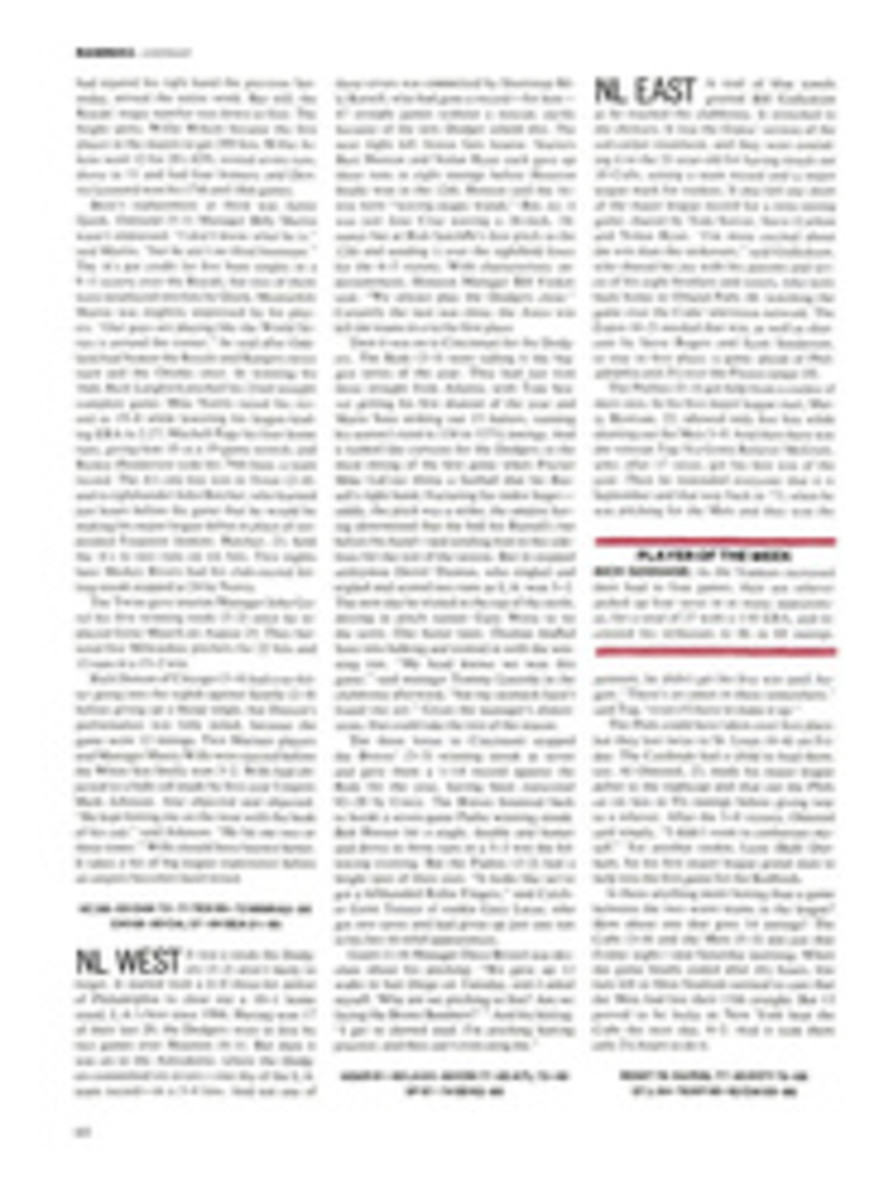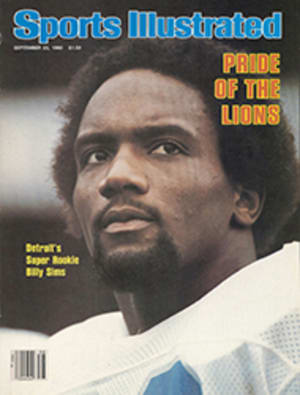
Oh, no, here he comes again
Here we go, folks. South Carolina on the Wichita State 14 and look out for George Rogers, the Gamecocks' bruising tailback. There he goes, off tackle, to the 10—carrying the noseguard on his shoulders and a safety around his hips. At the 10, another four defenders pile on top of Rogers, and he hauls the whole mob scene down to the seven, the six, the five. The Gamecocks score. Now South Carolina is on its 45, and Rogers is sweeping the right side. A cornerback comes up fast; surely Rogers will steam-roll him. But, no. This time he cuts left, glides through a hole and turns upfield. With a tidy little hip fake, he drops the noseguard, and then he goes into overdrive to outsprint a safety he outweighs by 40 pounds. Boffo, touchdown! Here we go again—Carolina's on the Wichita two. And where's Rogers? Handling a pitch off the option. Touchdown!
And so it went last Saturday night as South Carolina jolted the Shockers 73-0. When it was over, Gamecock Assistant Coach Harold White stood at midfield conversing with Wichita State's head man, Willie Jeffries, and White must have been talking about chins. "Keep it up," he said. "Just keep it up." Meanwhile, South Carolina Coach Jim Carlen had used all of his 89 healthy players and had summoned a 90th Gamecock out of the stands to suit up and check in. The victory set modern-day South Carolina records for points scored and widest margin. Carolina also had more touchdowns (10) than Wichita State had first downs (six). The Gamecocks had 430 yards rushing to Wichita's 76 and 19 first downs to one. No, it wasn't pretty.
Nor was it truly a showcase for Rogers. In the second quarter he carried the ball only twice. In the second half he didn't play a down. By the fourth quarter Rogers was so far out of the action that he could be seen on the sideline with his arms around a couple of honeys, having his picture taken.
All of which is too bad, because Rogers should be shown off. He is precisely 6'1¾" and weighs 224 pounds. He can run the 40 in 4.5 seconds. Yet, except around Columbia, S.C., he is virtually unknown. After a turnaround 8-4 record last season, the most victories in South Carolina's history, the Gamecocks were 2-0 at the end of last Saturday's game and crowing. This week, however, they have a chance to find out how good they really are when they travel to Los Angeles and take on that other USC, a/k/a Southern Cal.
There are several reasons for South Carolina's surprising turnabout, but the most important is Rogers. "First day, first practice, first time he tucked the ball under his arm, I knew George Rogers was something special," says Carlen. Hurdling, whirling or just plain whooshing out of the Gamecocks' option attack, Rogers has run for 100 yards or more in his last 12 games. His 1,681 yards last season set a South Carolina record and also established him as the school's career leader in rushing. It also made him the nation's second most productive runner, behind Heisman Trophy winner Charles White. Twice Rogers has rushed for more than 200 yards in a game, against Wake Forest in 1978 (237 yards) and at North Carolina State last year (217). Still, in last year's Heisman vote, he finished a distant seventh. And during his career South Carolina has not played on network television.
What makes Rogers' performances especially impressive is that, if necessary, he carries the ball 25 to 30 times a game. Against Wichita State, Rogers ran for 108 yards, though he had only 10 carries. In South Carolina's 37-0 thrashing of Pacific the week before, Rogers exploded for touchdown runs of 44 and 72 yards. The latter came on the second play of the second half. It was also Rogers' last carry. For the game he rang up 153 yards, on just 13 carries.
"I'll tell you about George Rogers," says John Ralston, administrative vice-president of the San Francisco 49ers. "I've assigned me to go to Los Angeles next week to scout him. We project Rogers to go in the first five of the first round of the NFL draft." Philadelphia Eagles player-personnel director Carl Peterson agrees. "According to BLESTO, the scouting combine, Rogers is the highest-rated back in the country," he says. "He doesn't have a lot of wiggle," says Eagle scout Jackie Graves, "but he can make you miss." South Carolina Backfield Coach Bob Brown puts it simply: "There are a lot of big backs and a lot of quick backs. But very seldom do you see a big, quick back. George's talent is two things: awesome and God-given."
But Rogers' achievements on a football field are not the most uplifting part of his story. As a kid he seemed doomed to a life of grinding poverty. His father split from the family when George was six years old, was later convicted of murdering a woman he lived with and is now a trusty in the Buford (Ga.) City Jail. George's family lived in housing projects in one Georgia town after another—Duluth, Norcross, Oglethorpe, Scottsdale, Dorville, Decatur, East Lake Meadows, Englewood—always one step ahead of the landlord. George hated the welfare rations and his clothes, which were little more than rags. The neighborhood kids taunted him; they called him "Dirty Boy." Oh, he itched to play football, but students had to pay $2 for insurance, and George didn't have it.
When he was a teen-ager, things got worse. He lived in a cramped Atlanta project with his mother, two brothers and two teen-age sisters—each of whom had a baby. The babies cried a lot. Most of his friends were strung out on drugs. Not marijuana or cocaine. Too expensive. They would spray paint into a plastic bag and inhale it deeply. "Then they'd just act weird," Rogers says. He was an outcast. "Many a night I was run home by some group," he says. Often he would skip classes at Roosevelt High, thumb downtown and falsify his age so he could sign on with the Peakload Labor Pool and weed fields or sweep out warehouses for $1.80 an hour. His goal was to play football, but Roosevelt was a power, a Class AAAA biggie, and George had hardly ever played.
"Many a night I used to cry myself to sleep." Rogers says. "But I never felt like giving up. Everywhere I've been, God or somebody has been there with me." He's angry with no one. "I love my daddy. He and mama always fought. But folks don't understand how bad he had it, being black, being poor, having bills he couldn't pay. And my mama—pretty soon I'm going to buy her a great big house and pay the light bill, too."
Atlanta wasn't for Rogers, and no one knew it better than he did. The turning point came when, just before his sophomore year, he decided to move back to Duluth, Ga. But to do so, he needed a place to live. And it was Otella Rogers who opened her door.
Today Otella Rogers is 67 years old and practically blind. Her brother-in-law is Rogers' grandfather. She lives alone now, has never seen George play football and probably never will. But mention of him brings life to her voice. "He came to see me with his mother," Otella recalls. "They'd lived next door once, and I knowed him from a little ol' thing. Used to whump him, too, when he needed it. He said he wanted to move in and have a chance to play football here. I told him if he wanted to be something, I'd help. But he had to act like he wanted it. It didn't mean laying out at night. Or going to school one day and missing four." A domestic who worked mornings, Otella taught George to fix his breakfast. She also taught him to do his own laundry. And she made absolutely sure that he went to school.
One week into football practice at Duluth, Coach Cecil Morris took George aside, shook him and said, "Keep trying, son. You can be anything you want." In Duluth's third game a starting halfback named Bobby Freeman broke a wrist. Rogers replaced him and ran for four touchdowns. He finished the season with more than 900 yards. The next year Rogers gained 2,300 yards, and Duluth romped to the Class AA championship. Rogers has been running wild ever since.
Last Thursday in a Gamecock dorm Rogers sprawled on his bed, telling a visitor his story. It's a typical college dorm room, mostly books and posters. On the wall hangs a photo of Rogers soaring in midair for a game-clinching first down against Georgia. On another wall is a banner, the Order of the Palmetto, one of the highest awards given to South Carolina residents. "You know," he said, "for a kid brought up like me, football makes you or breaks you."
PHOTO

